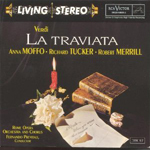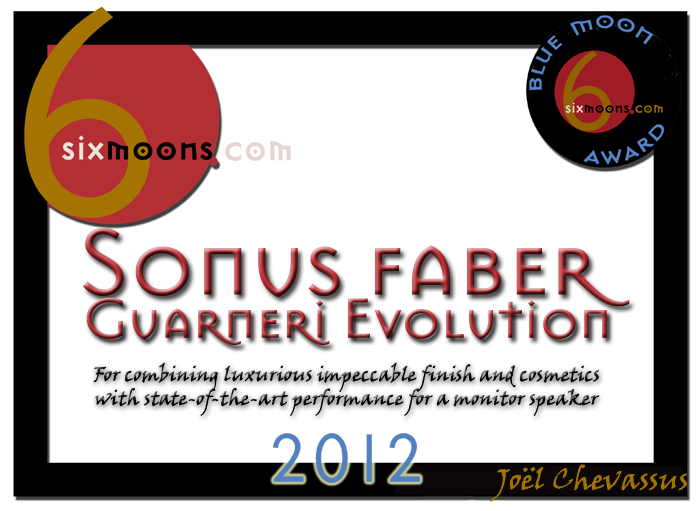This review page is supported in part by the sponsors whose ad banners are displayed below |
 |
 |
Over the final few weekends of my audition period I listened to many operas and symphonic pieces with maximum enjoyment. Opera and lyrical music are very demanding genres because of their broad dynamic shifts and overall complexity. The Guarneri’s tonal accuracy did not change over these shifts. On the contrary all forte and tutti passages which commonly suffer room distortion and fatigue after a certain period of intense listening went down easy sans stress. Due to timbral warmth all difficult passages with Mahler and Bellini became pure pleasure instead. Very often the difference between live music and domestic playback is down to this obvious distortion which is generated between speaker and listening room at anything approaching realistic levels.
|
 |
With the Guarneri I perceived the natural sweetness of a live event with the illusion of not being in the first row but rather about row 6 or 7 to enjoy a broader overall vision of the stage. The Guarneri’s purpose seemed to be to neither surround me nor to place me directly on stage. It provided a very contemplative perspective and for my personal taste the best seat to enjoy the music from. This comfortable position did not imply compromises on detail or precision by any stretch. The stunning power handling of the Italians made for a very rare quality of tone plus high resolution. My listening sessions were consistently engaging. Seemingly perfect acoustic phase also enabled a very precise location of instruments in a broad three-dimensional window.
|
 |
A prime example for outstanding timbres was the reproduction of bass drums. The Guarneri Evolution did not deliver the kind of visceral impact that is often more artifact than fair reproduction of what was recorded yet still provided physical involvement. The Guarneri always remained a model of accuracy with an undistorted picture of the musical action. The reproduction of bass drum, though not generating as impressive an impact as my Triangle monitors, felt completely realistic thanks to an outstanding gradation of tonal hues and stunning transparency. I would challenge every audiophile who still insists that Sonus faber provides a very pleasant but colored reproduction to listen to these. There is no finger print. Each recording maintained its own acoustic identity to clearly sound different from all the others. It truly is a kind of paradox how they can deliver such realistically dense saturated tone with such a neutral response (sensitively recessed in the treble which will suit many contemporary living-room acoustics and makes for greater realism in the first place).
|
 |
Listening to La Traviata [RCA Living Stereo – 82876 82623 2], all the massed voices sounded a bit clearer and less strained than usual. Attacks of strings and their pizzicato were amazingly precise with good decay but no zooming in on the instruments. The Evolution did not deliver sonic detail with the common excess brightness and forwardness but went about it in a more subtle warmer manner. It did not attempt to engorge the soundstage bigger than appropriate. This was a very homogeneous performance and perhaps the most coherent I have heard from a stand-mount speaker with a very deep and holographic stereophonic image. I was warned about very delicate placement requirements but my personal experience was that precise setup was not hard to achieve. I also found them unusually tolerant with off-axis listening and they always preserved a good part of their exceptional depth and imaging focus regardless of listening position.
|
|
|
|
|
|
On the Esa-Pekka Salonen reading of Stravinsky’s Rite of Spring [DG – 00289 477 6198], the performance of the Los Angeles Philharmonic was earthy but sensitively detailed. With appropriate amplification the Guarneri demonstrated stunning bass capabilities. The low register was truly articulated and nuanced, with very nice extension free from nasty room interferences. The low frequencies seemed to be under control always. Very often even expensive monitor betray a feeling of artificial bass with a poor gradation of timbre perhaps caused by room-gain distortion. Here bass was always perfectly proportioned, with no exaggeration but a subjective sensation of convincing linearity.
|
|
|
With this particular landmark recording the Guarneris made a full demonstration of what they can achieve in accuracy and low distortion. Bass drum and timpani had realistic impact, transients were not the best I’ve heard but very honest and the tonal palette was incredibly organic within a five-stars three-dimensional image. Spatially the Sonus fabers are extraordinary performers and arguably perfect for my tastes due to their particular voicing and calm treble.
|
 |
|
 |
On Beethoven’s 9th Symphony under Nikolaus Harnoncourt [Teldec Classics – 9031 75713 2], the speakers again put surprising weight on the kettle drums. The final movement was superb with an effortless clarity that made it completely exhilarating. And though the modern techniques used by the Chamber Orchestra of Europe such as minimized vibrato and modern-day instruments plus Harnoncourt’s overall sober style do not make for the most engaged listener participation, the beauty of tone, overall coherence and deep soundstaging for once made it completely involving.
|
|
| I was a bit doubtful about their adequacy on darker recordings which might have turned too dull. Listening to Hiromi’s Spiral [Telarc – CD 83631] I was very enthusiastic however. The Yamaha CFIIIS Concert Grand is a fast and light piano and Tony Grey's Fodera electrical bass has a very loud and deep sound signature. This configuration was theoretically not the friendliest to get the best from the Guarneri’s frequency extremes. Even so the CFIIIS harmonics were well rendered and the timbre of Yamaha’s flagship realistic enough. The Evolution’s most impressive feature on this recording however was the bass, especially during the second track "Open Door – Tuning – Prologue". |
|
|
I was able to precisely distinguish the subtle pressure shifts of each finger. The bass line was not dark as it can often be but richly nuanced and tuneful without any flab. Being a high-grade audiophile recording (all technical information about the microphones on each instrument, the recording equipment and consoles—mainly EMM Labs—and cables is detailed on the cover booklet), this CD is an unforgiving test and features many difficult and demanding cuts. The small Sonus faber played the entire CD, even the very electronically minded "Return of Kung-Fu World Champion", with utter conviction.
|
|
|
Conclusion. The Sonus faber Guarneri Evolution is a tremendous performer. Among many decent versatile and well-designed stand-mounted monitors they provide a unique combination of high transparency, tonal density, homothetic soundstaging and listening comfort. For these strong points close to perfection they represent in my opinion a fascinating proposal for true domestic integration with elegance and room adaptability. Not being the most versatile, they should appeal to mainly classical music and acoustic instrument listeners. For classical fans they are indeed the top choice I’ve ever heard in this speaker category.
They are neither perfect—no speaker is—nor affordable. They don’t exhibit the most unrestrained dynamics and require very substantial amplification to hit their stride. Evens so I truly enjoyed my time with them. I had endless listening pleasures with very demanding recordings I usually only consume partially because some fatigue caused by dynamic peaks and room limitations intrudes inevitably. Listening to an entire symphony at realistic levels in a living room is no minor achievement. But the Evolutions did just that and with extreme ease! I was amazed to listen for so many weeks to entire operas with such intense pleasure. This made me quite sad to see them return to Arcugnano. If I wasn’t in the market for floorstanders to support a new larger room under construction, the Guarneris would have stayed.
In closing, it always is a complex task to award any expensive products particularly when it isn't truly universal. Yet merely contemplating how these speakers performed on acoustic music and voices I couldn’t in good conscience walk away without saluting their warm clarity with an award. Massimi complimenti to Paolo and Livio for such an insightful design! |
 |
 |
 |
Sonus faber website
|
 |